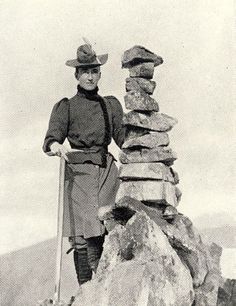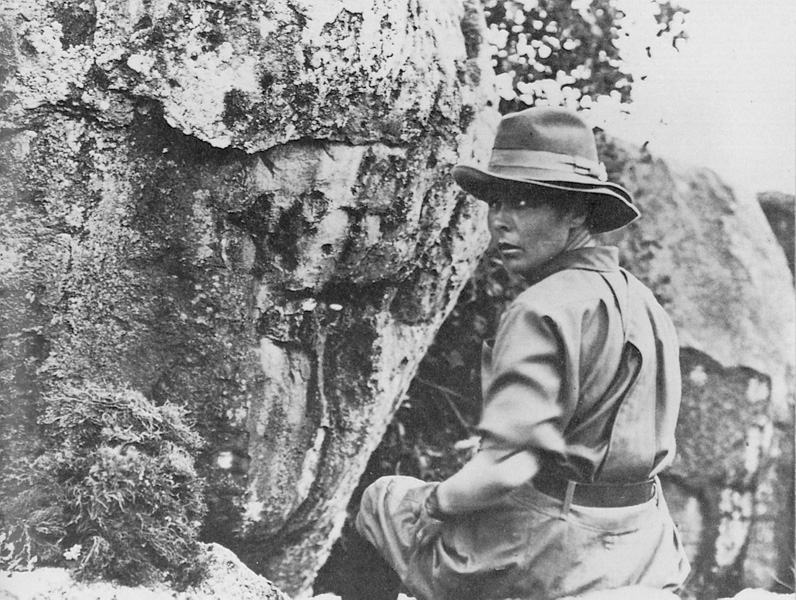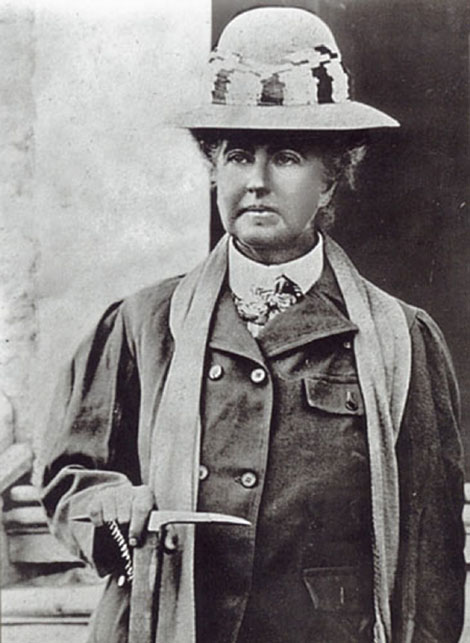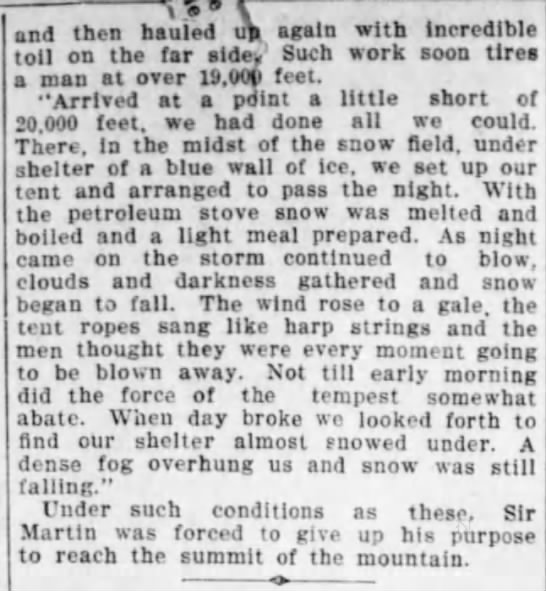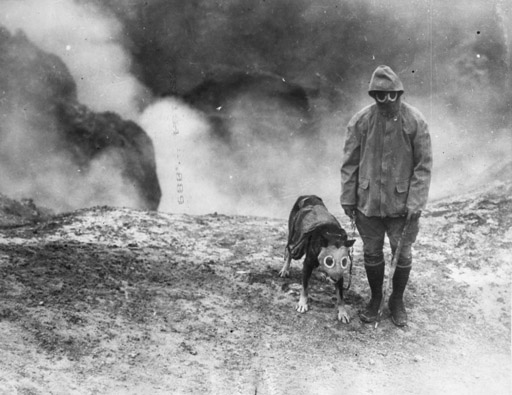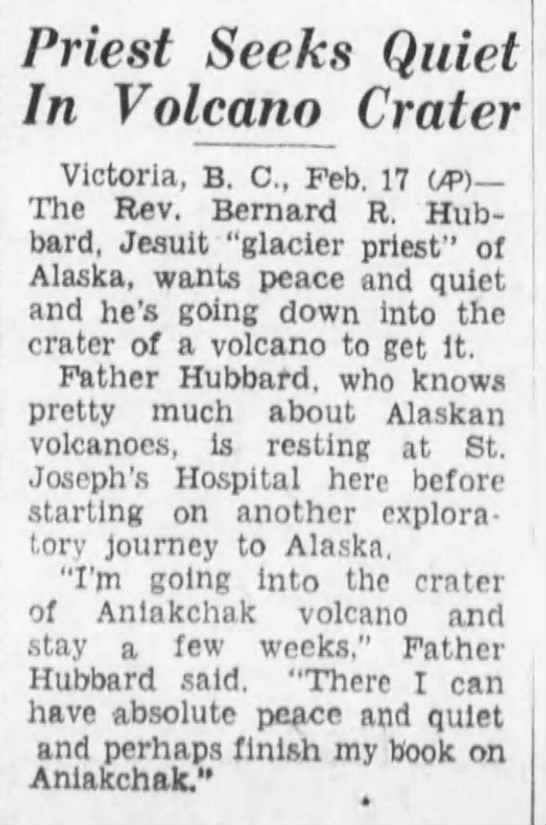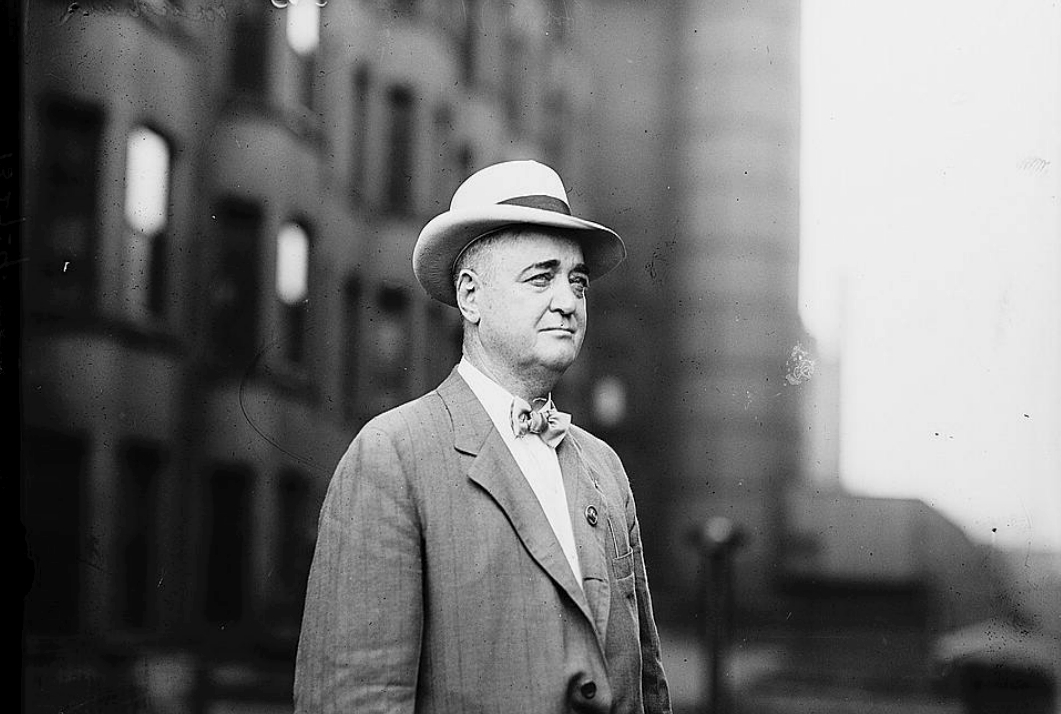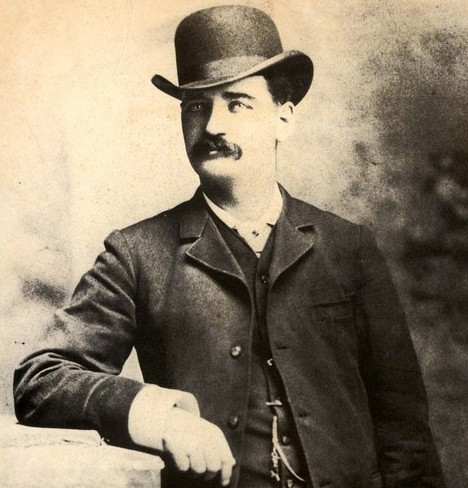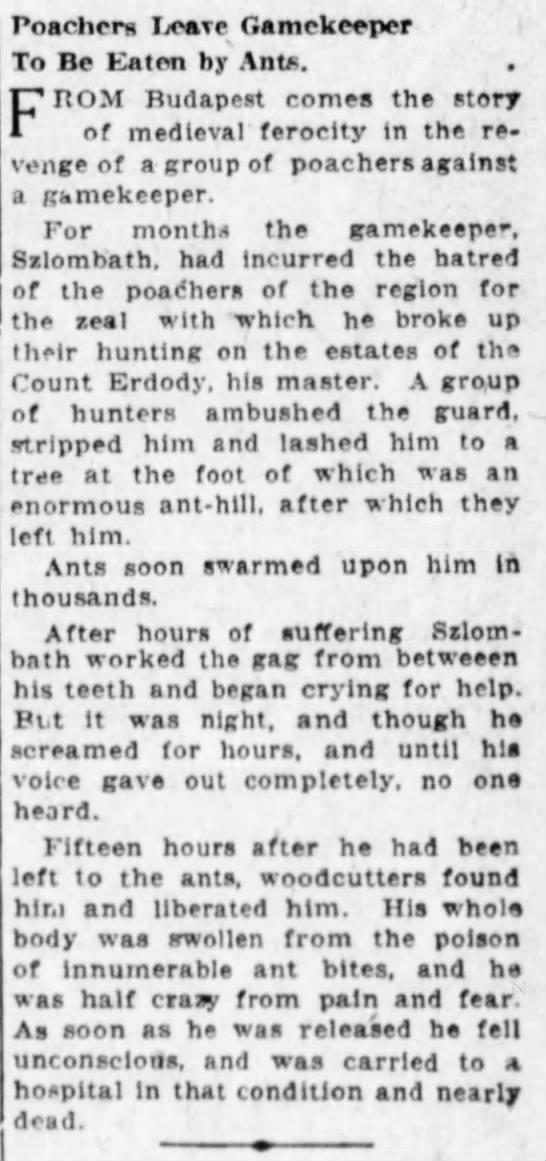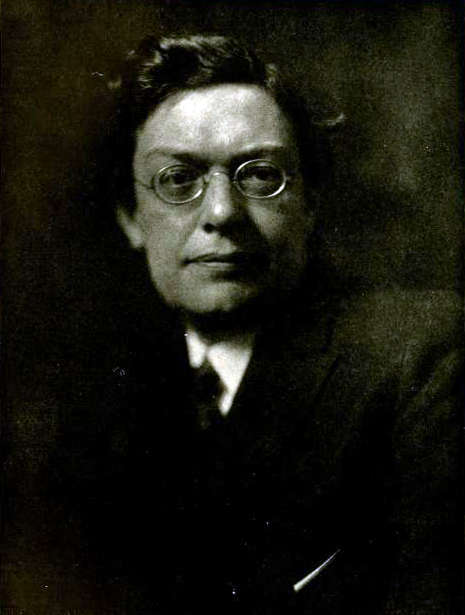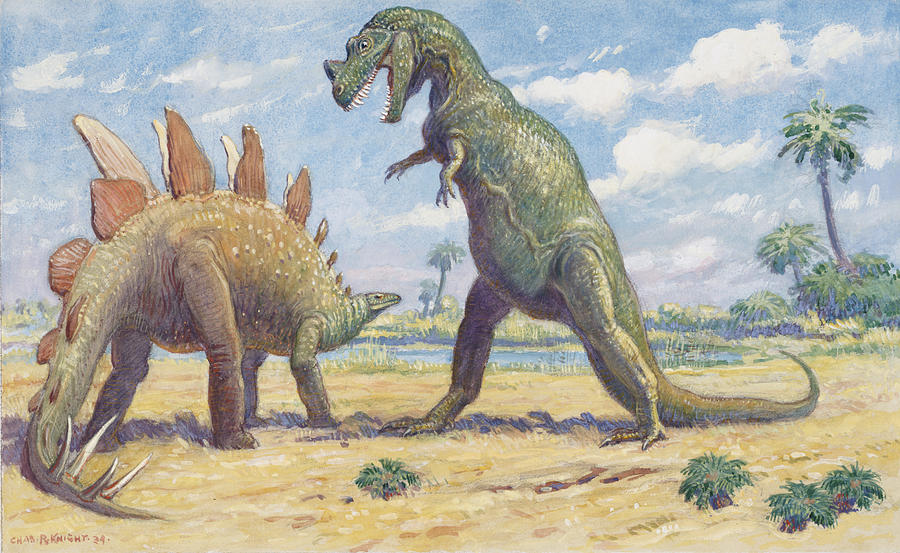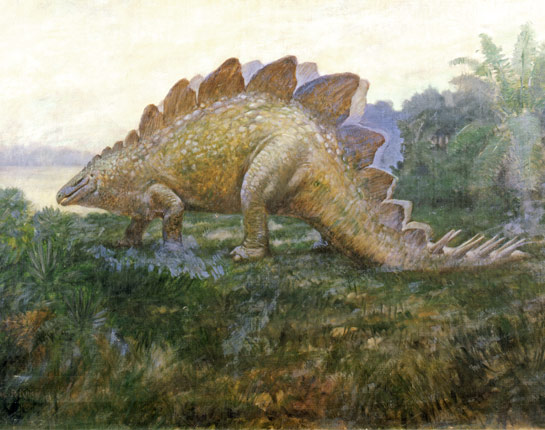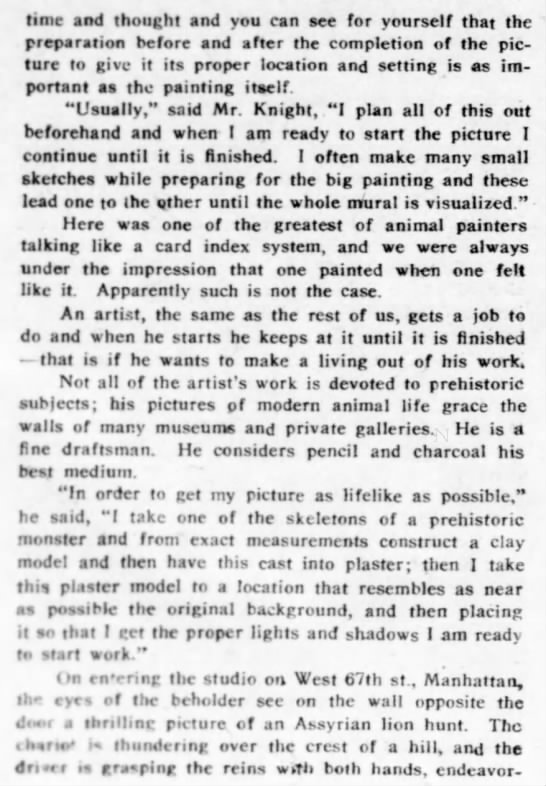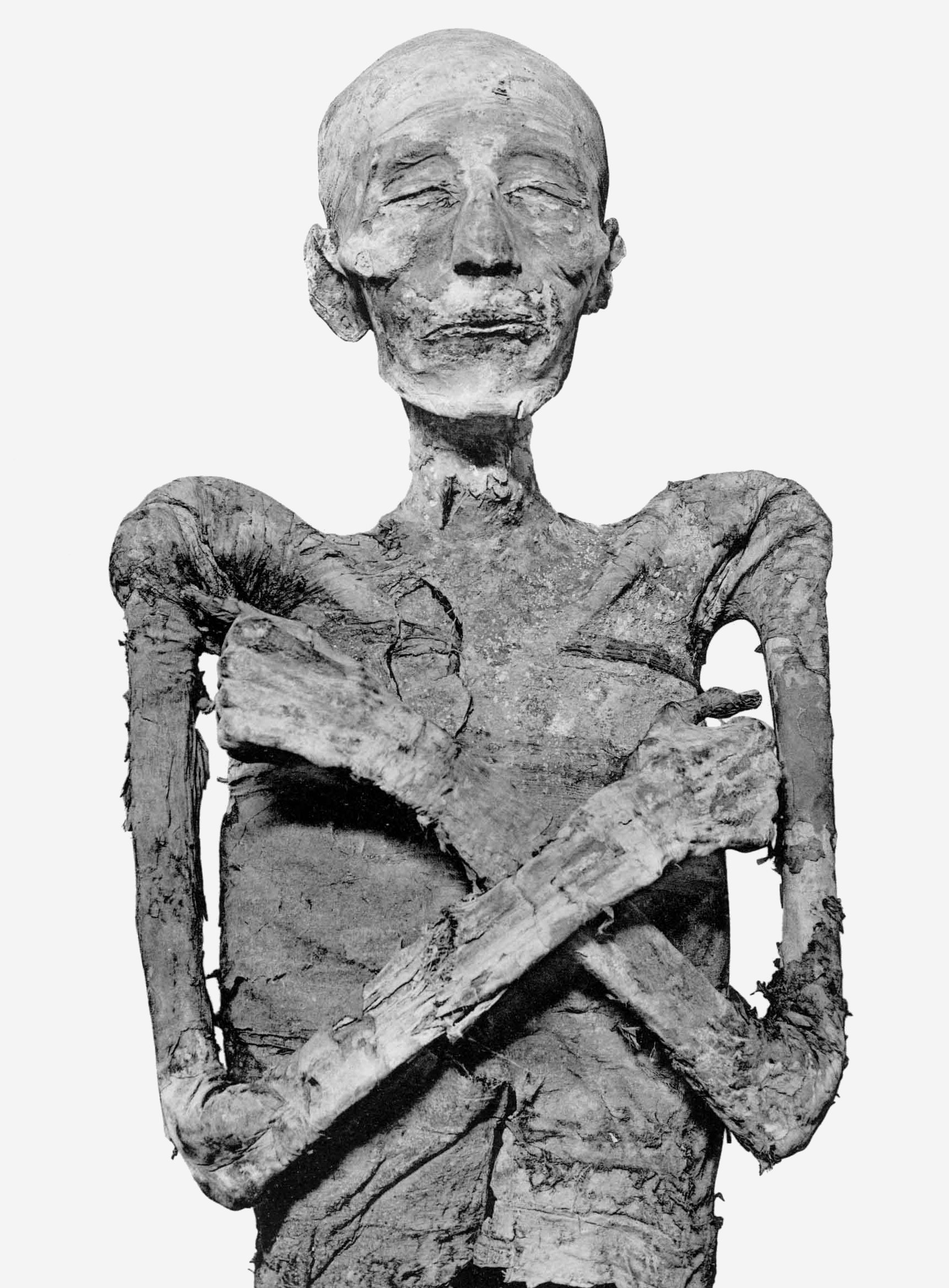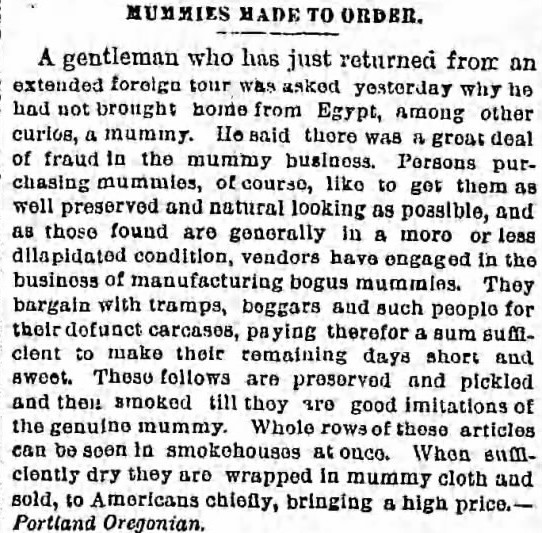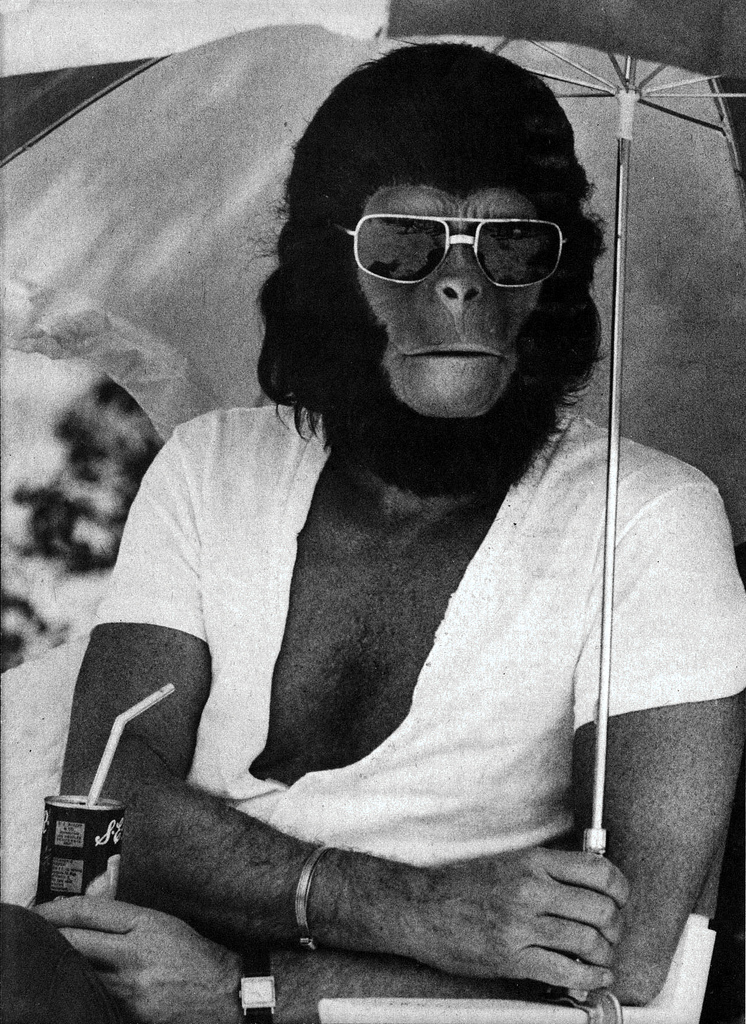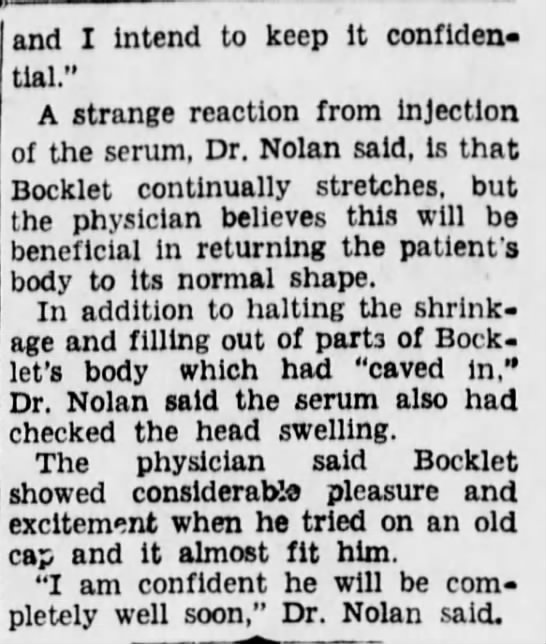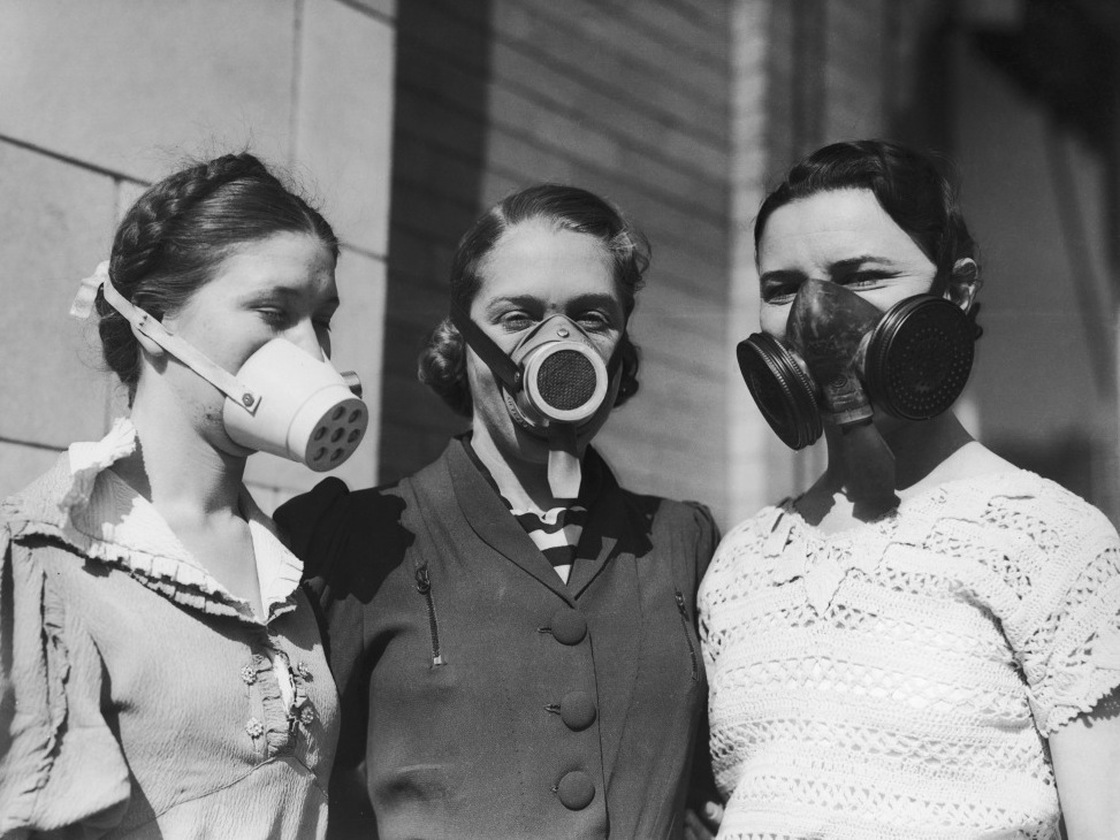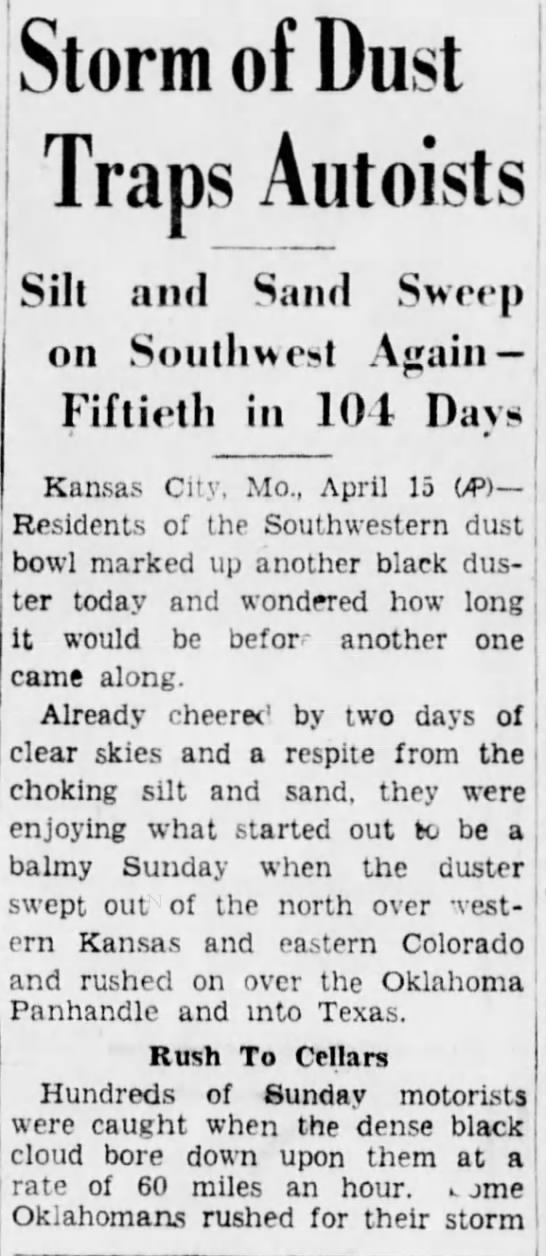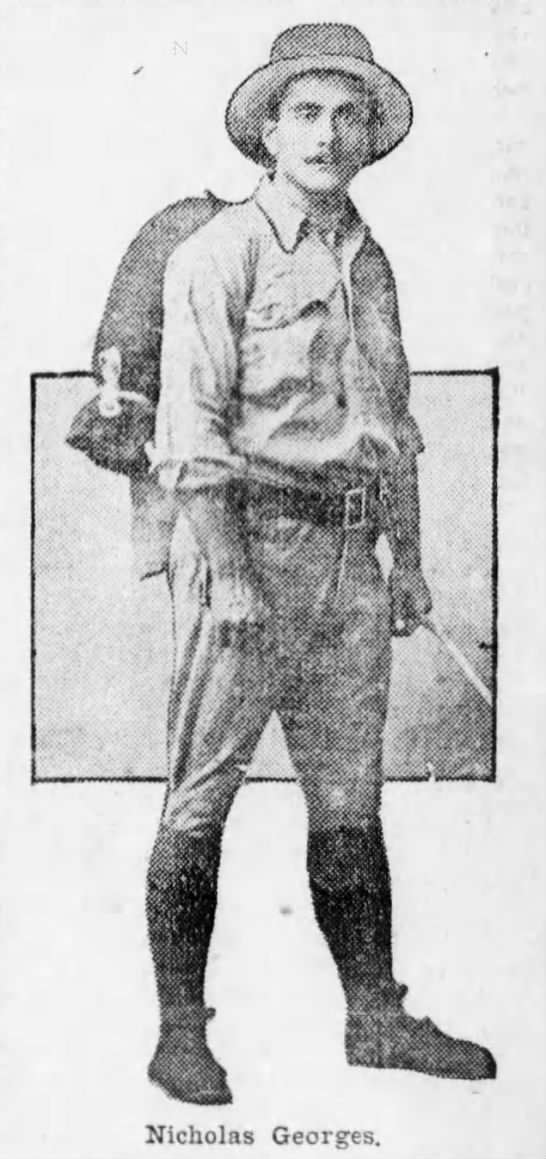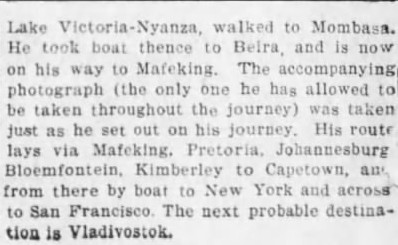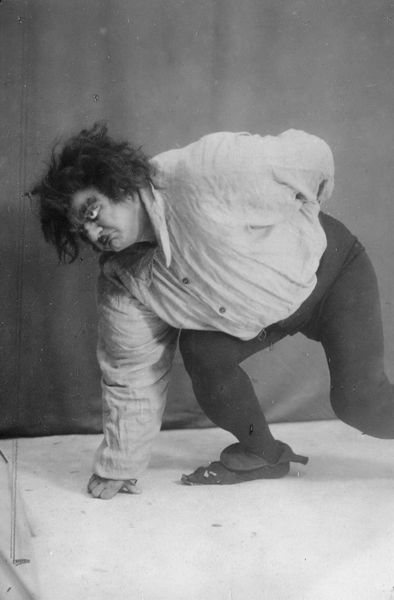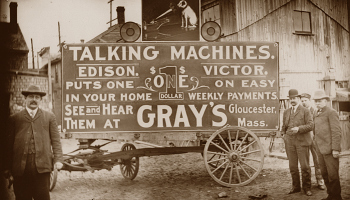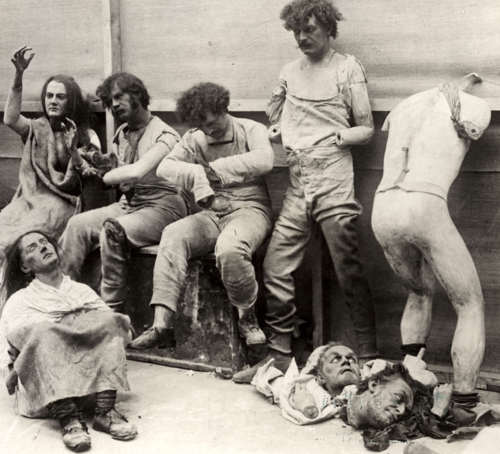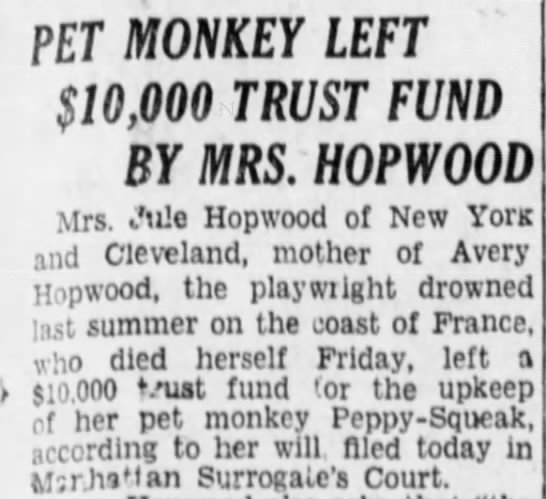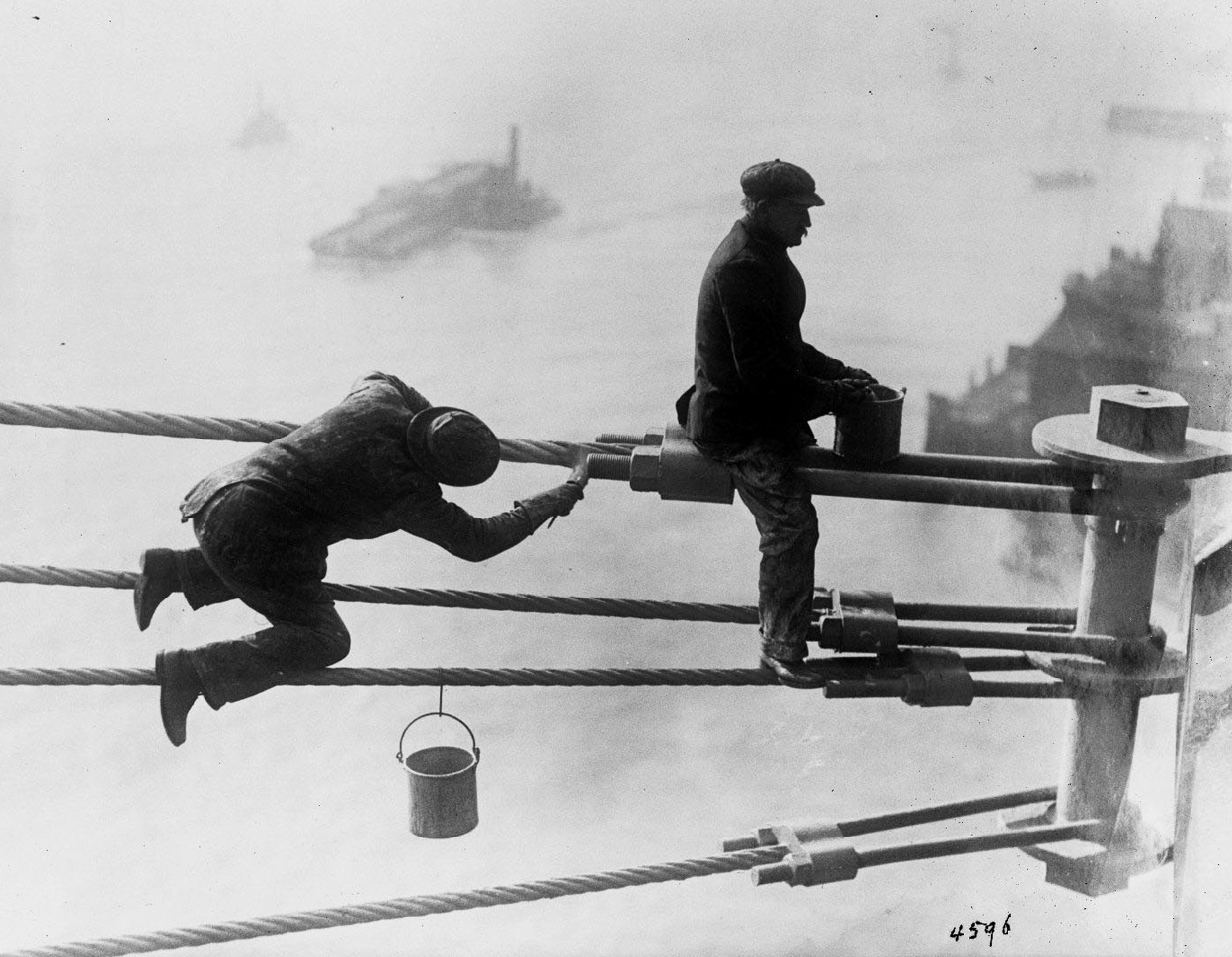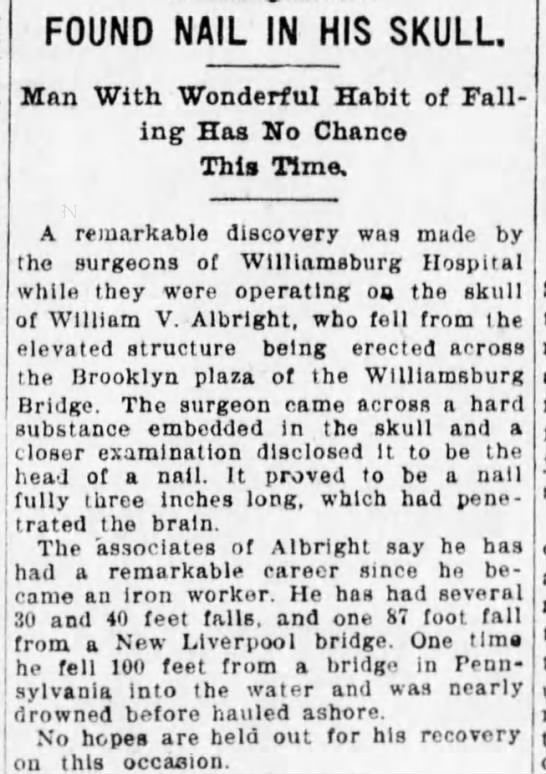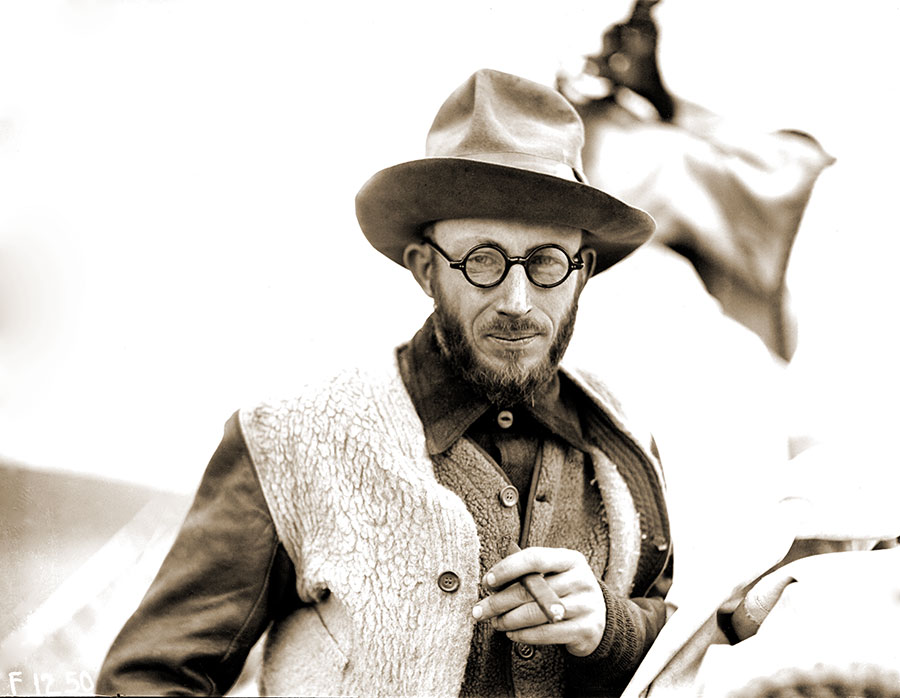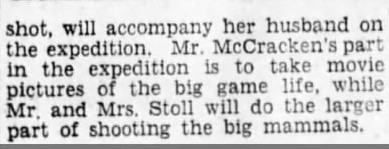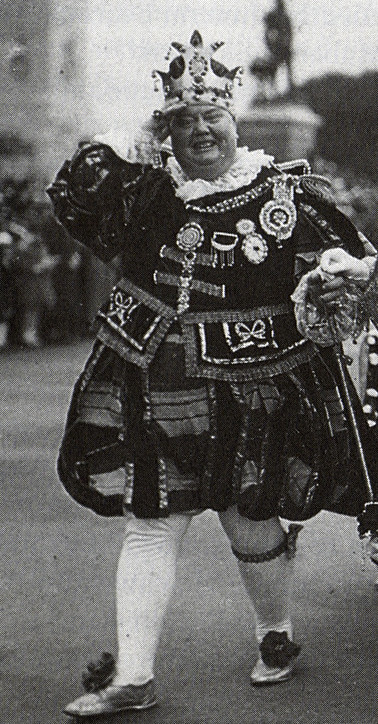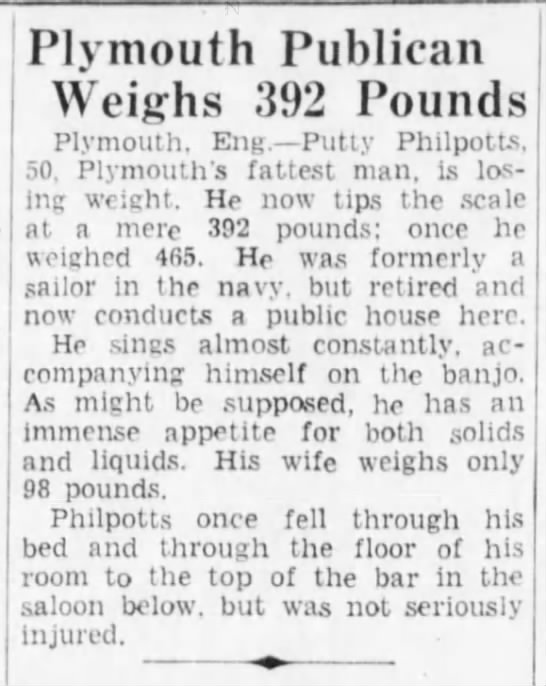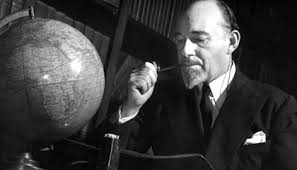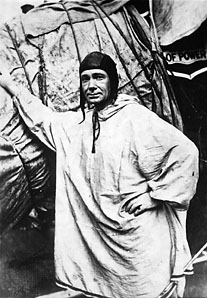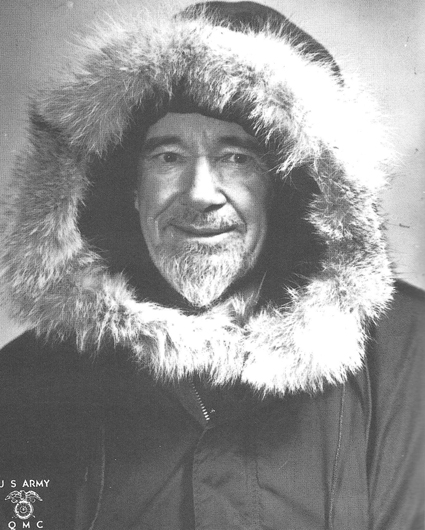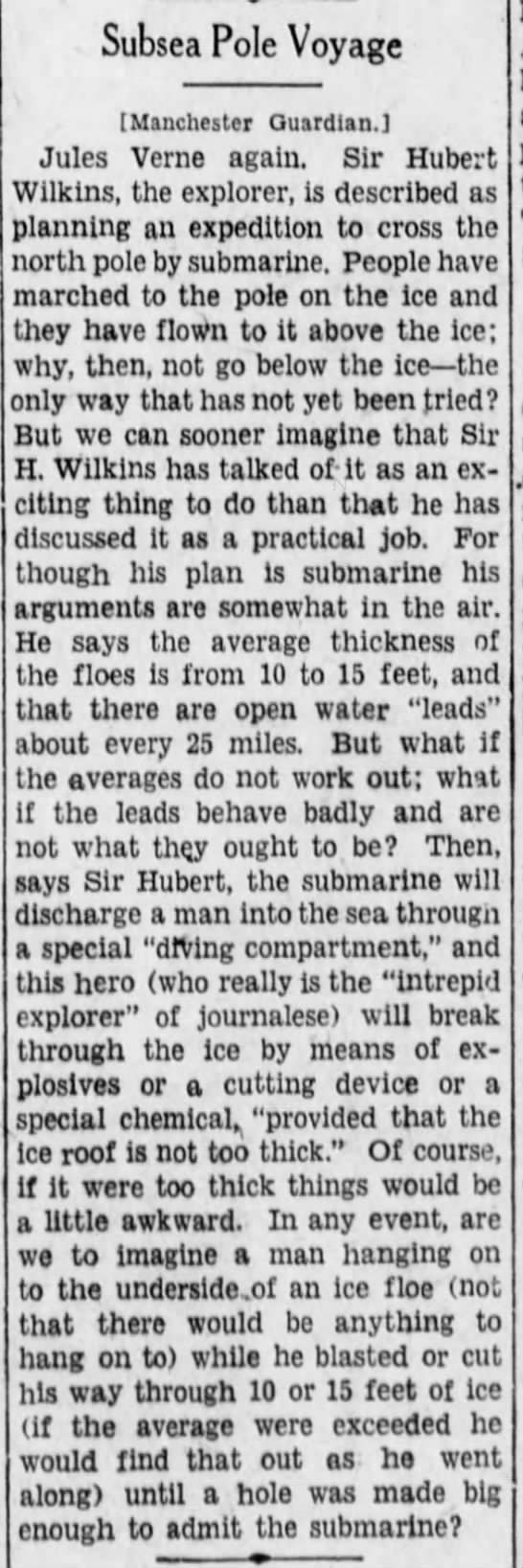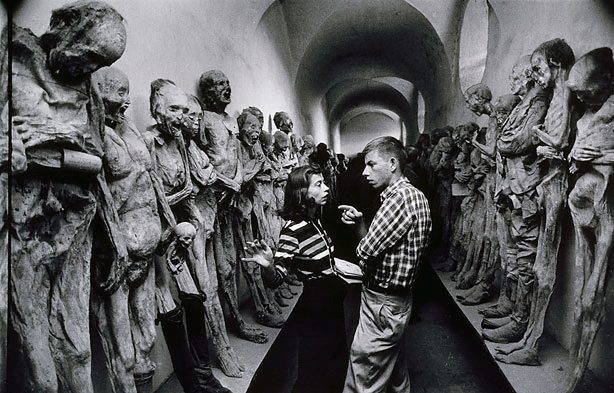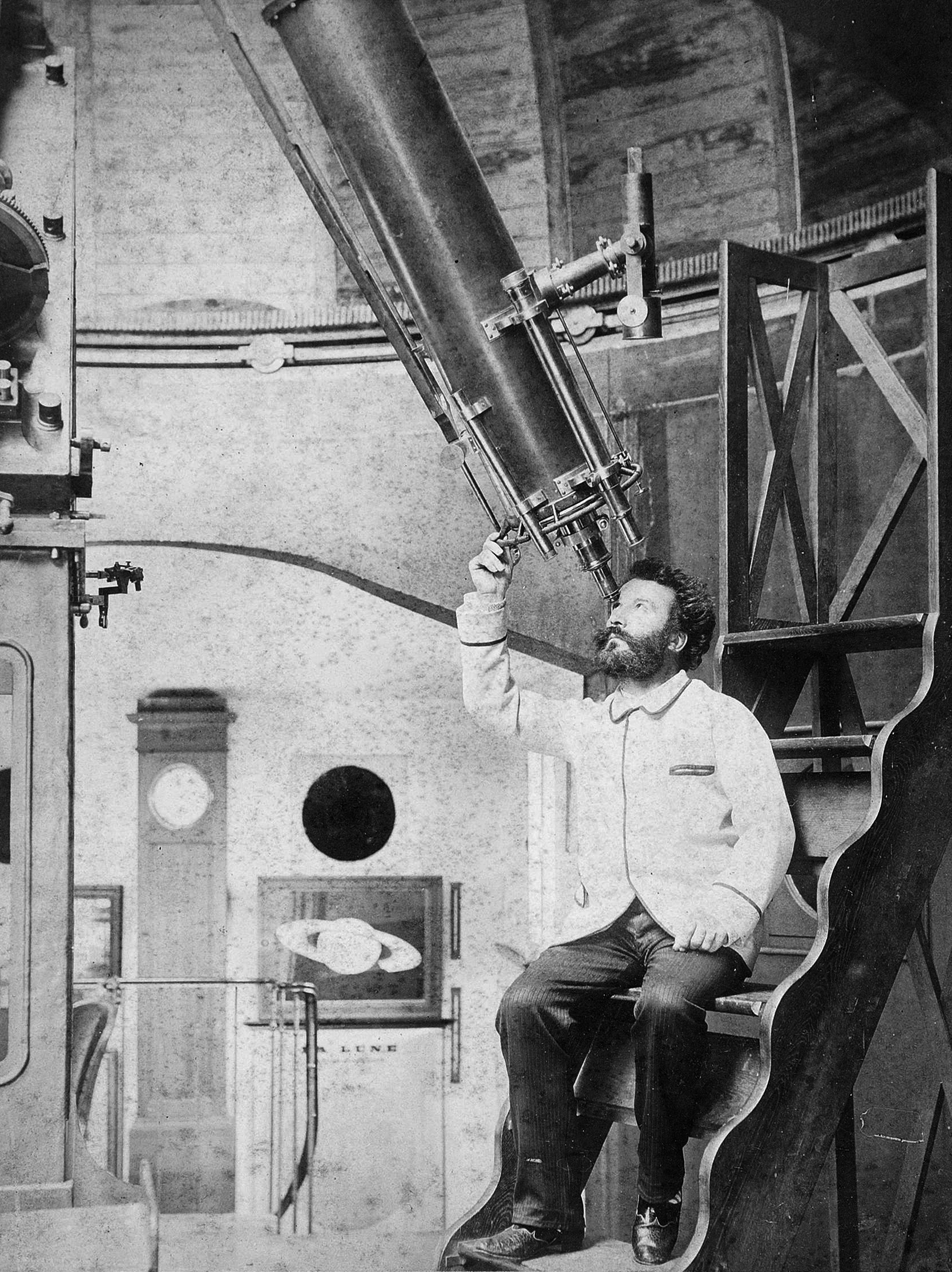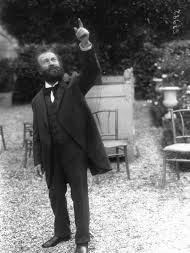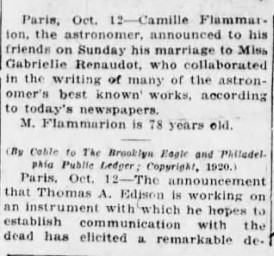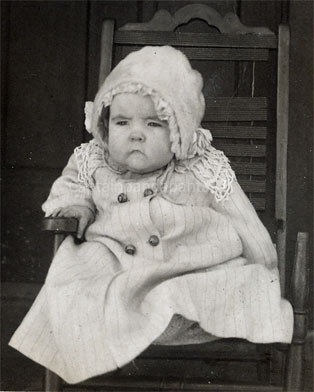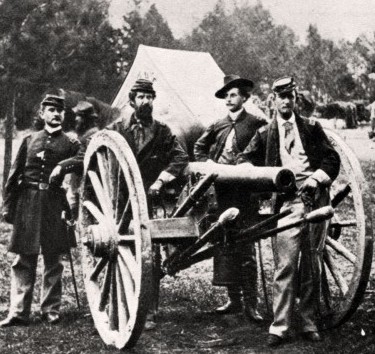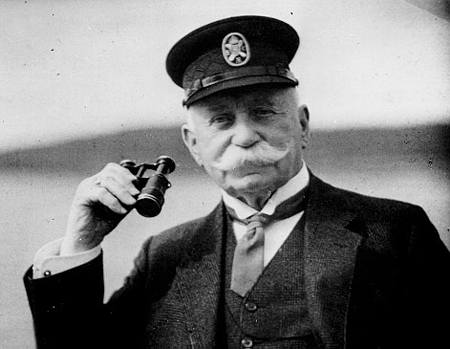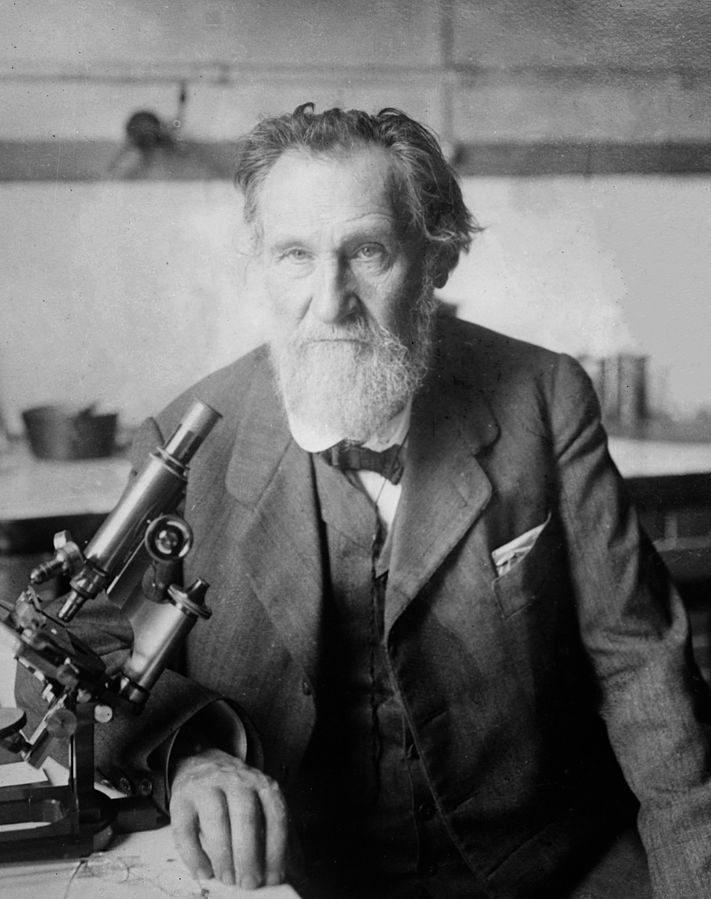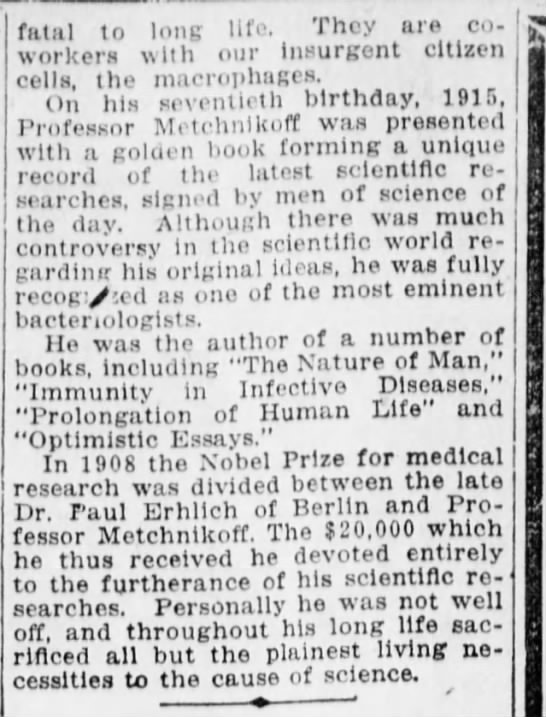From the November 30, 1902 Brooklyn Daily Eagle:
You are currently browsing the archive for the Old Print Articles category.
Despite choosing the dangerous profession of mountain climber, Annie Smith Peck somehow made it to the end of her life in one piece, even surviving accidents involving street cars and mules. The apex of her adventurous career was probably her 1903 ascent of Illampu in Bolivia, which she made with geologist Dr. W.G. Tight and two guides, a treacherous scaling reported on in the September 2, 1903 Brooklyn Daily Eagle.
Tags: Annie Smith Peck
No one has ever come up with a bigger lie than F. Scott’s Fitzgerald with this whopper: “There are no second acts in American lives.” There have always been second acts and many more after that. I mean, not if you drink yourself to death, but for anyone who waits out the bad times with good humor.
Bat Masterson was many things in his sixty-seven years–buffalo hunter, Army scout, sheriff, gambler, boxing manager, etc.–until he was one final thing in his dotage: a New York City newspaper sportswriter. He died an ink-stained wretch at an editor’s desk, not a gunslinger in a saloon. The report of his death from the October 26, 1921 New York Times:
William Barclay Masterson, better known as Bat Masterson, sporting writer, friend of Theodore Roosevelt and former sheriff of Dodge City, Kan., died suddenly yesterday while writing an article at his desk in the office of the The Morning Telegraph. He had been connected with the paper for more than ten years, and for the last few years had been one of its editors.
At one time Masterson was said to have been the best known man between the Mississippi and the Pacific Coast, and his exploits and his ability as a gun fighter have become part of the tradition of the Middle West of many years ago. He was the last of the old time gun fighters.
He was born in Iriquios County, Ill., in 1854, the son of a farmer who came originally from St. Lawrence County, N.Y. Little more than a boy, Bat, his rifle across his knees, left the farm and rode into the then Fort Dodge and joined a party of buffalo hunters. Then his actual career began, and probably more weird and bloodthirsty tales have been written about him than of nearly any other man. His fights, however, were in the cause of justice, and he was one of a group of gunfighters who made that part of the country unhealthy for the bad men of the period.
While in the frontier town Bat heard one day that his brother had been killed across the street. Bat headed over. What happened he thus told later on the witness stand:
‘The cowboys had been on the range for some time and were drinking. My brother was the Town Marshall. They were carrying six-shooters and he attempted to disarm one of them who was particularly mean. They shot and killed him and they attempted to kill me. I shot and killed them–one at any rate–and shot the other one.’
His second killing was a cowboy named Jim Kennedy, who had come to town seeking the life of the Mayor. Kennedy shot several times through the door of a Mayor’s house and killed a woman. Then Masterson started out to get him. And he did.
One of Masterson’s most famous exploits was the battle of Dobe Walls, when with nine companions he stood off 200 Indians in a siege of 29 days. The attacking force was composed of Arapahoes and Cheyennes. A fortunate accident–the fall of part of the dirt roof of a saloon in which the buffalo hunters were sleeping–prevented the party from being surprised by the Indians and murdered in their sleep, for the attack was not anticipated. In the gray light of a June morning, when the hunters were engaged in restoring the roof, the Indians descended upon them. The hunters abandoned the roof and took to their guns. Time after time the Indian attack was stopped and the enemy driven back to the shelter of a fringe of cottonwoods along the Canadian River.
Masterson was only 18 years old when he joined Lieutenant Baldwin’s civilian scouts under Colonel Nelson A. Miles. He participated in the battle of Red River, where the Indians were commanded by Geronimo, and in other Indian engagements. Masterson lived fifteen years in Denver. There he became interested in pugilism. He went broke backing Charlie Mitchell in his fight with James J. Corbett. He was an official in the fight between Fitzsimmons and Corbett.•
________________________________
Masterson officiating Fitzsimmons-Corbett in 1897:
Our visual understanding of prehistoric megafauna and other creatures is aided greatly by the work of Charles R. Knight, the painter who gained nationwide attention beginning in the 1920s for his interpretations of dinosaurs and birds long extinct. He certainly couldn’t work from life or memory or photographs, so he became a hunter of facts, an interviewer of scholars, a measurer of skeletons. For an article in the July 31, 1927 Brooklyn Daily Eagle, reporter Frank J. Costello visited the paleoartist in his Upper West Side Manhattan studio and studied his process. The piece’s opening below.
During the nascent days of aviation, scads of hobbyists tried their hand at building flying machines, hoping to become the first to solve flight. It was inexpensive enough that the lone inventor could dream. In fact, a pair of bicycle manufacturers named Wilbur and Orville Wright managed the feat. Later, tens of thousands of small businesspeople attempted to create the first successful commercial-airplane company.
When flight began to point to the stratosphere, however, the costs were too dear for the individual, and the race would have to be run among governments. That’s really only changed this century, as technologists with the wealth of small nations have used money gained in other industries to enter the Space Race. Perhaps 3-D manufacturing will eventually make it possible for smaller-scale operations to compete.
In 1930, one hopeful was unbowed by a lack of funds, scientific facts, and, it would seem, basic common sense. Robert J. McLaughlin of New York craved “wealth, health, and glorious adventure,” so he planned to fly to the moon and live there. A report of his ambitions follows from the May 26, 1930 Brooklyn Daily Eagle.
Tags: Robert J. McLaughlin
The Dust Bowl of the 1930s was situated in the American prairies, but the ramifications of the poor farming methods were wide, and the storms soon swept east and obscured the sun over the entire Atlantic seaboard. I thought of what was known as the “Black Blizzards” because I just read Michael Tennesen’s The Next Species, a very interesting book about the potential end of us. The author draws an analogy between the Depression Era dust storms and what may occur in Las Vegas if the crust of the nearby desert floor dissipates, something that’s possible because of the havoc we’re playing with the environment. The difference between boom town and ghost town can be decided by the tiniest particles. A year after the first wave of the storms in 1934, mayhem was still the order of the day, as this article from the April 15, 1935 Brooklyn Daily Eagle can attest.
Tags: Michael Tennesen
Tags: Nicholas Georges
The phonograph was initially a disappointing technology commercially, even if Thomas Edison was something of a smash when he demonstrated his “talking machine” in London in 1888. One nineteenth-century Brooklyn undertaker, however, found a novel use for the new contraption during the funeral of young freak-show performer. An article in the August 18, 1895 Brooklyn Daily Eagle described the unconventional ceremony.
Tags: Augusta Burr, Undertaker Stillwell
Tags: Mrs. Jule Hopwood, Peppy-Squeak
Tags: William V. Albright
Go mummy-hunting in the Aleutian Islands, you say? But I’m not finished tweeting yet!
Harold McCracken, arctic explorer and big-game hunter and magazine editor and inaugural director of the Buffalo Bill Center of the West, was forever risking his hide on rugged fact-finding missions, hoping to recover one shard or another of the past. On the occasion of a spelunking expedition he was to make to search for preserved prehistoric corpses, the Brooklyn Daily Eagle ran an article about the dangerous sojourn in its April 22, 1928 edition. The opening of the piece follows.
Tags: Charles H. Stoll, Harold McCracken, Mrs. Merle L. Stoll
Tags: Putty Philpotts
Sir Hubert Wilkins, polar explorer, was familiar with investigating uncharted swatches of the globe by air, but in 1931 his aim was lower, as he commanded the Nautilus expedition whose goal was be the first to explore the North Pole by submarine. The voyage, which began in New York Harbor, was a grueling, troubled one, and after casualty and numerous engine failures, his benefactor, William Randolph Hearst, begged the adventurer, via wireless, to end the mission. Eventually Wilkins acquiesced, but not before proving a submarine could operate underneath the polar ice cap. Prior to the journey, Wilkins was thought to be batty for even trying, being seriously doubted in an article in the May 2, 1929 Brooklyn Daily Eagle. Below the piece is Wilkins’ 1958 What’s My Line? appearance.
__________________________
“It was thought to be fantasy”:
Tags: Hubert Wilkins
The occasion of French astronomer and author Camille Flammarion’s second marriage in 1920 gave opportunity to the Brooklyn Daily Eagle to publish his thoughts on a machine Thomas Edison announced he was working on, which would purportedly allow the living to communicate with the dead. Talk about a long-distance call.
Flammarion, who believed a personality of sorts survived after life had ended, was understandably excited about the deceased being conjured via allegedly scientific means in Menlo Park. In addition to the serious astronomical work he published, Flammarion wrote sci-fi and speculative narratives and is credited with birthing the idea of an alien race superior to Earthlings, which he believed in actuality and utilized as a plot device in his fiction.
Tags: Camille Flammarion, Thomas Edison
 This very melodramatic postmortem of Count Ferdinand von Zeppelin in the March 9, 1917 Brooklyn Daily Eagle asserts that the dirigible builder passed away a broken man because his airships were deemed no longer worthy of bombing missions meant to reduce humans to piles of limbs. Interesting to note Zeppelin was a young German military officer when he encountered his first transport balloons while traveling in America during the Civil War, meeting aeronauts Thaddeus Lowe and John Steiner. (In the top photo, taken in 1863, the German visitor is the second from the right, an embed with a Union unit.) It wasn’t until he was past 50 that Zeppelin was able to completely devote himself to his long-deferred dream of popularizing dirigibles, and his successes with the ships, among many failures, helped make mass air travel seem like destiny.
This very melodramatic postmortem of Count Ferdinand von Zeppelin in the March 9, 1917 Brooklyn Daily Eagle asserts that the dirigible builder passed away a broken man because his airships were deemed no longer worthy of bombing missions meant to reduce humans to piles of limbs. Interesting to note Zeppelin was a young German military officer when he encountered his first transport balloons while traveling in America during the Civil War, meeting aeronauts Thaddeus Lowe and John Steiner. (In the top photo, taken in 1863, the German visitor is the second from the right, an embed with a Union unit.) It wasn’t until he was past 50 that Zeppelin was able to completely devote himself to his long-deferred dream of popularizing dirigibles, and his successes with the ships, among many failures, helped make mass air travel seem like destiny.
 _______________________________
_______________________________
1912: “Zeppelin’s first cruise over Germany.”
Tags: Ferdinand von Zeppelin
Tags: Joseph Schmotz
Russian zoologist Elie Metchnikoff, winner of the Nobel Prize in 1908, is generally credited as the father of gerontology, the first to think of death as a “disease” to be treated and cured. A century ago, he felt people should make it to 150 or so. While the doctor never made it nearly that far himself, as you can see in the below excerpt from his July 16, 1916 Brooklyn Daily Eagle obituary, a lot of his tips for encouraging longevity were sound.
Tags: Elie Metchnikoff




